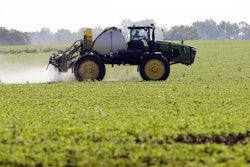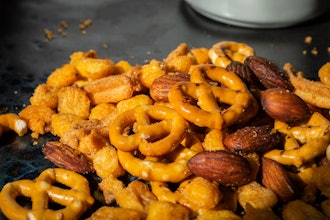NEW DELHI (AP) — Cracked earth. Failing harvests. Drying streams and sinking hopes.
Indians have grown increasingly desperate waiting for the long-delayed deluge of this year's monsoon, the annual rains that replenish India's rivers and quench crops to keep this vast, agricultural nation of 1.2 billion fed through the year.
As cities swelter and farmers helplessly watch their harvests wilt and profits vanish, Prime Minister Manmohan Singh assured the nation Monday the government was ready "to address any situation that may arise due to any rainfall anomalies."
So far, the rains were at least 22 percent below normal, several states faced drought and farmers feared grave losses. Some analysts put the rain deficit at 31 percent.
A drought would be devastating since about 60 percent of India's population work in agriculture and that sector contributes 16 to 20 percent of the nation's gross domestic product. It could also worsen inflation of food prices.
"The situation is quite bad, exceptionally bad, and very serious for farmers," said scientist Kirpal Singh Aulakh, former head of Punjab Agricultural University in Ludhiana.
More than half India's farmlands are rain-fed, with much of the rest irrigated from rapidly depleting underground aquifers.
While Singh pledged to address failed crops, provide new seeds, and monitor low reservoirs and hydropower problems, he admitted to a grim reality, with stored water at only 61 percent of what it was last year and his government on high alert and offering more than $800 million in aid to stricken states.
Farmers were dubious about the assurances.
"They are just exuding optimism, but they have done nothing since we pointed to impending drought concerns since before June," said Vijoo Krishnan, joint secretary of the All India Farmers' Union. "The farmers are depressed, feeling their lives have been left as a question mark over whether the rains will come."
Since June 1, when the monsoon had been forecast to hit the coast of southern Kerala and begin heading north, Indians have waited for the deluge. Thirsty migrants mob water trucks delivering daily rations to the slums of New Delhi and Mumbai.
Clear skies over the countryside have led to desperate prayer. In the south, men dressed in red paint, beads and feathers perform ancient dances courting Hindu gods of plenty. In the north and east, villagers stage ceremonies to marry pairs of frogs or donkey couples in a tradition they hope will persuade the gods to quench their lands.
The prayers have gone unanswered.
Cereal production is down 25 percent from last year, while pulses used to make the Indian staple dish dal were down 24 percent.
"Some pulse prices are going to go up," said Food Minister K.V. Thomas, according to an interview published Tuesday in the Times of India.
The situation has become even more precarious because of rising fertilizer prices and farmers favoring water-intensive rice cultivation even in arid states, due to government purchase prices that are generally higher than market prices.
The central government has said it is looking at plans to fix market prices, change export regulations and distribute surplus grain from warehouses. But many feared the measures would be undermined by the rampant corruption and poor management that regularly leads to stolen shipments, rotting grain and price fixing.
The hardships and precariousness of farming have driven more than a quarter-million farmers to suicide in the last 16 years, said Krishnan, of the farmer's union.
"You won't find numbers like this anywhere in the world," he said.
The head of the Agriculture Ministry's commission on food prices agreed on a need for action.
"The time to wait is almost over," Ashok Gulati said. "It's time to act and save the crop wherever we can."






















